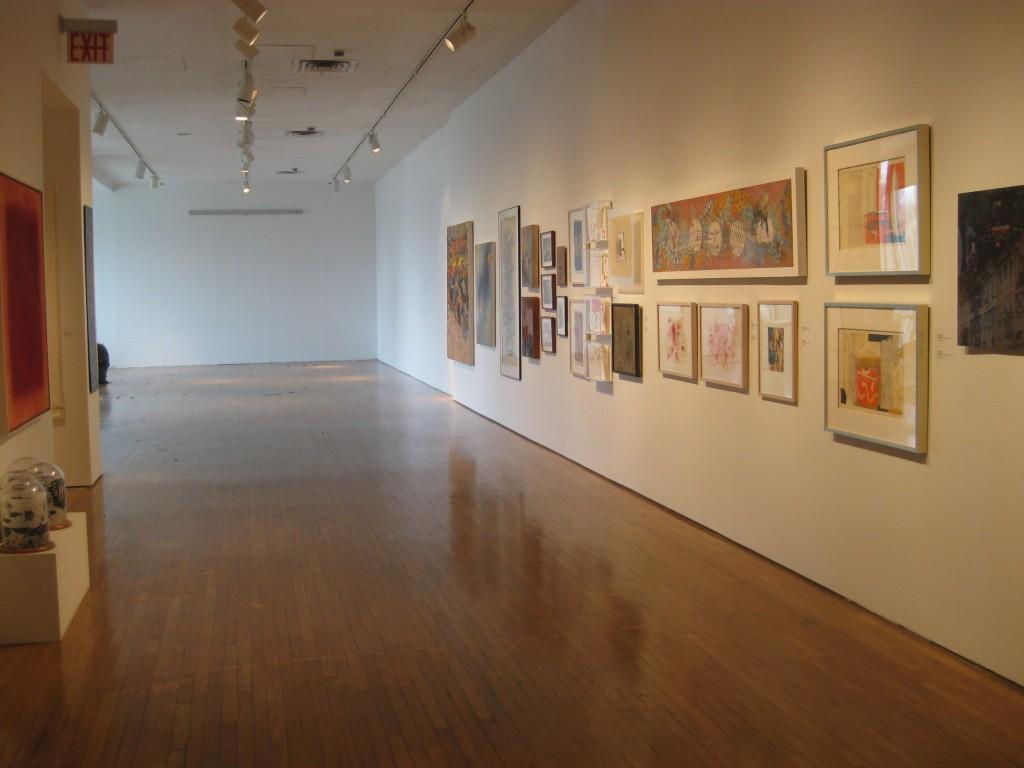New York World’s Fair, Then and Now
Revisiting the 1939 Wonder at the Queens Museum of Art
July 23, 2011

Published: April 20, 2011
Printed on a ceramic commemorative plate is the image of George Washington, gazing towards two oddly futuristic, geometric shapes. He is staring at the Trylon and Perisphere, the iconic structures that comprised the Theme Center of the 1939 New York World’s Fair.
Hopeful images like this adorned booklets, flyers, flags, radios, pins and countless other souvenirs sold at the Fair, and while their colors have faded, the optimism of their time shows bright as ever from behind glass display cases at the Queens Museum of Art’s “Future Perfect: Re-Constructing the 1939 New York World’s Fair.”
On April 10, the museum, which stands on Flushing Meadow Park, the site of the Fair, debuted the exhibition, aiming to preserve the history that surrounds the Fair. Photographs show the park’s transformation from a barren ash dump to a bustling fairground by illustrating the planning process, the considerable amount of construction and renovation that took place and the Fair’s celebrated opening.
Declarations and property documents signed by the men behind the Fair (Grover Whalen, Fiorella LaGuardia and Robert Moses) are displayed along with photographs of its construction. Blueprints of the Trylon and Perisphere hang alongside pamphlets and illustrations by the iconic illustrator Frank Westinghouse. One illustration details the life of “The Middleton Family,” an average, smiling American family who live comfortably thanks to the convenience of cutting-edge, consumer technology.
The World’s Fair signified a period of change, not just for New York City, but for the entire country. As the economy slowly began to regain its momentum, modern technology, in which Americans placed immense hope, did, too. Pins declaring such simple messages as “I was there” and “I have seen the future” show the significance of the Fair’s ability to reinvigorate the hope and excitement of the people. The Fair embodied faith in a certain future. Toys and models of gleaming, futuristic technology promised Americans a life of prosperity and comfort, of modernity that would come to fruition in the 1950s.
Also of note is the exhibition’s smaller display of artifacts from the 1964 World’s Fair. The phrase “Peace Through Understanding” adorns the standard placards and pins, as well as one Asian-style fan. One poster reads: “Demonstrations, parades, congregations and picketing on the fair site are prohibited.” The Unisphere still stands just in front of the museum, symbolizing hope for a world united through technological advancement.
To name the exhibition a reconstruction is a bit of a stretch. The displays are simple and straightforward, more reminiscent of a museum of history than one of art. Nevertheless, the relevance of the subject transcends its quaint presentation; the hope within these old relics can be downright infectious, particularly at a time when many claim that the current recession has ended.
Like a pat on the back from history, the exhibition is a reminder that in similar times of economic hardship, the country has always bounced back. The promise of technological progress shown here echoes that of the past decade: The sleekness and sheen of General Electric models and products on display evoke a sense of futurism that precedes Apple. Meanwhile, signs of wartime division and strife over Vietnam from the 1964 Fair reflect that which colored the political landscape for the past 10 years. Franklin Delano Roosevelt addresses a large crowd in a photograph of the opening ceremonies, the first televised presidential speech in U.S. history, which inspired feelings of hope and change long before the two words became a bumper sticker slogan.
The placement of the World’s Fair exhibit in an art museum, surrounded by works that could only come from our world today, serves to give a perspective on just how much has changed and how much has remained the same. It shares the second floor with an exhibition of works by emerging Indo-American artists; the transition from old transistor radios to exotic prints and mixed media pieces feels like a step into a different world. Yet it’s a perfect example of the worldly influence that the World’s Fair promoted.
The first floor features art pieces that place childhood objects in new contexts. It’s a perfect parallel for the World’s Fair exhibit, which puts U.S. history in the context of our own time—a time, like that of the Fair, of monumental progress, conflict and change.
Exiting the museum, Flushing Meadow Park attains a new beauty: What once was a desolate mountain of ash is now a booming community center. Children play around the massive Unisphere as though it were the world’s tallest tree. One wonders what Washington would think.











